Carolee Schneemann @ The Barbican
8 September 2022 – 8 January 2023
Carolee Schneemann can be considered as one of the big hitters in the feminist art movements that flourished in the 1960s and 1970s. Certainly at the time, women were judged largely by the rules of a patriarchal world and the art world was no exception.
Trying to compete on their terms was never going to succeed. The exhibition inadvertently highlights this quite well, divided as it is across two floors. The entry level floor, showcasing Schneemann’s early works, shows an artist largely caught in the macho world of Abstract Expressionism and trying to make her mark in that world. Schneemann acknowledges both Robert Rauschenberg and Joseph Cornell were influences, unfortunately much of it is a poor derivative of Rauschenberg’s ‘Combines’ and her ‘box constructions’ a weaker version of Joseph Cornells’.
The Barbican however, on putting on this exhibition and titling it ‘Body Politics’, clearly wants you to focus on the work that confronted that patriarchal world head on.
It needs to be said that just as a white person isn’t qualified to comment on the ‘black’ experience, or a heterosexual to comment on the ‘gay’ experience, I am, as a man, not particularly qualified to comment on the merits of feminist art and the issues it raises, as the majority of those issues are ones that have never affected me personally. The opinion is therefore one borne from empathy rather than direct experience. Nevertheless, what cannot be in doubt is that in the 1960s and 70s, primarily using their bodies to address issues of misogyny, discrimination and the male gaze, artists such as Ana Mendieta, Judy Chicago, Valie Export, Francesca Woodman, Cindy Sherman and Carolee Schneemann amongst others, blew the doors open on the male dominated world of contemporary art.
Below are some of Schneemann’s keys works.
‘Fuses’ - 16 mm film still (1964 – 67)
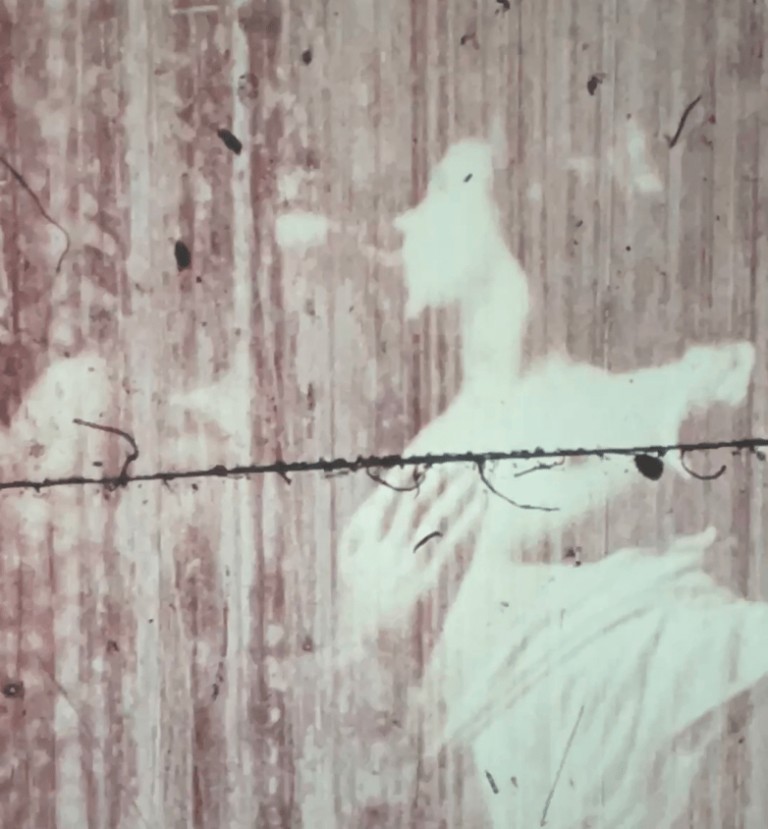
‘Fuses’ - 16 mm film still
A documentation of love making from a women’s perspective. Both participants, Schneemann and her partner Tenney, filmed themselves over a three year period having sex. This was a revolutionary act at the time, depicting as it did, a woman totally immersed, invested in and enjoying non-reproductive sex. Illustrating, as Schneemann described, her desire to ‘touch tenderly, fuck fiercely’.
The post production splicing, scratching and distressing of the film removes the convention of phallocentricity and therefore renders the viewing experience erotic rather than pornographic; a result surely intended by Schneemann.
‘Eye Body: 36 Transformative Actions for Camera’ (1963)
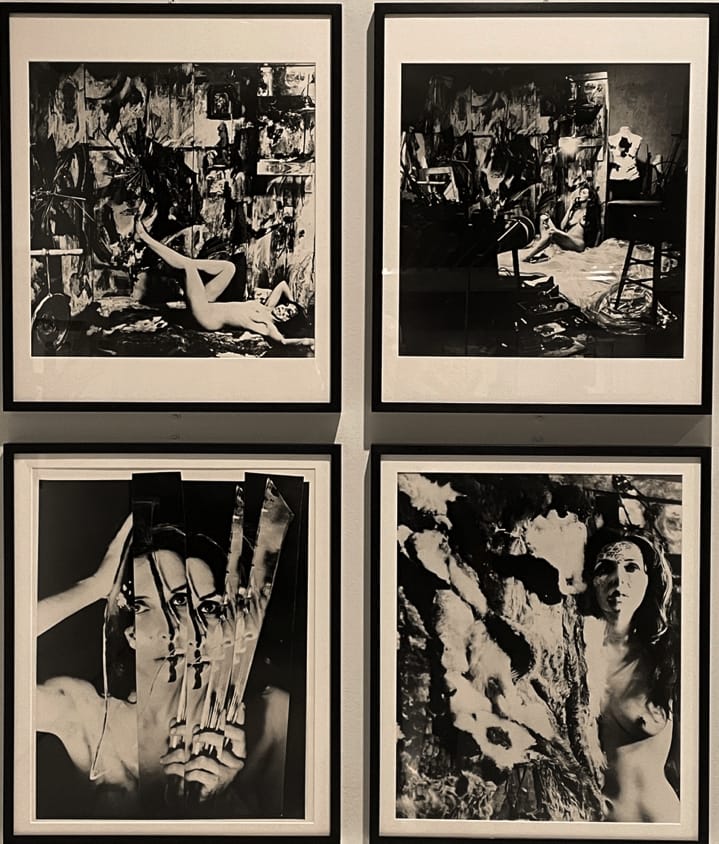
Eye Body - 36 Transformative Actions for Camera (1963)

Eye Body - 36 Transformative Actions for Camera (1963)
Schneemann’s response to the role of women in the art world; namely providing source material for the objectification of the female body. By using her own body, Schneemann posed the question ‘Can I be both an image and an image maker?’ Confronting the dominant narrative that women are passive subjects rather than active makers, she positioned her own body in her studio and created work by photographing herself in interaction with the materials around her.
‘Interior Scroll’ (1975)
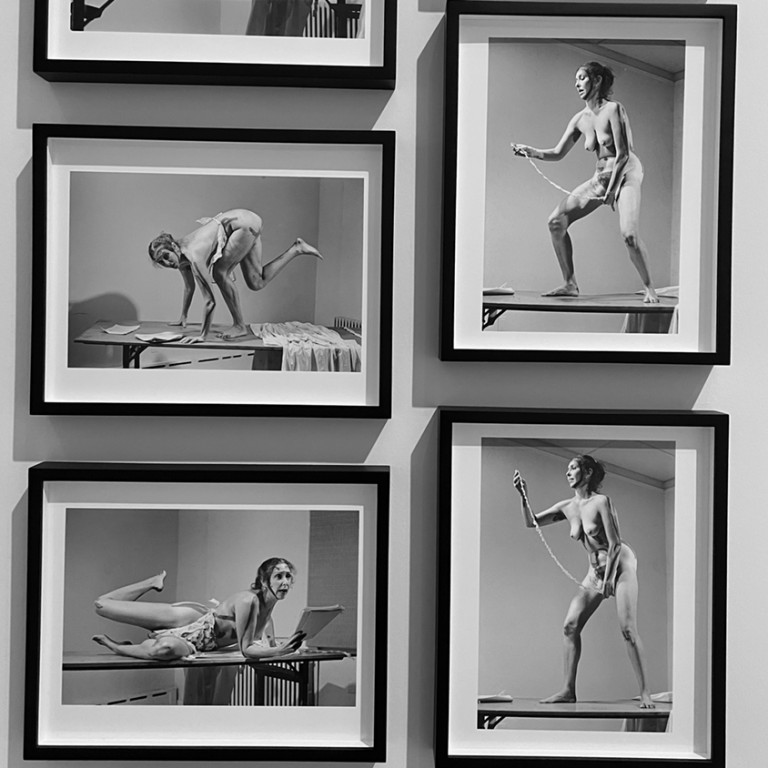
Interior Scroll (1975)

Interior Scroll (1975) detail
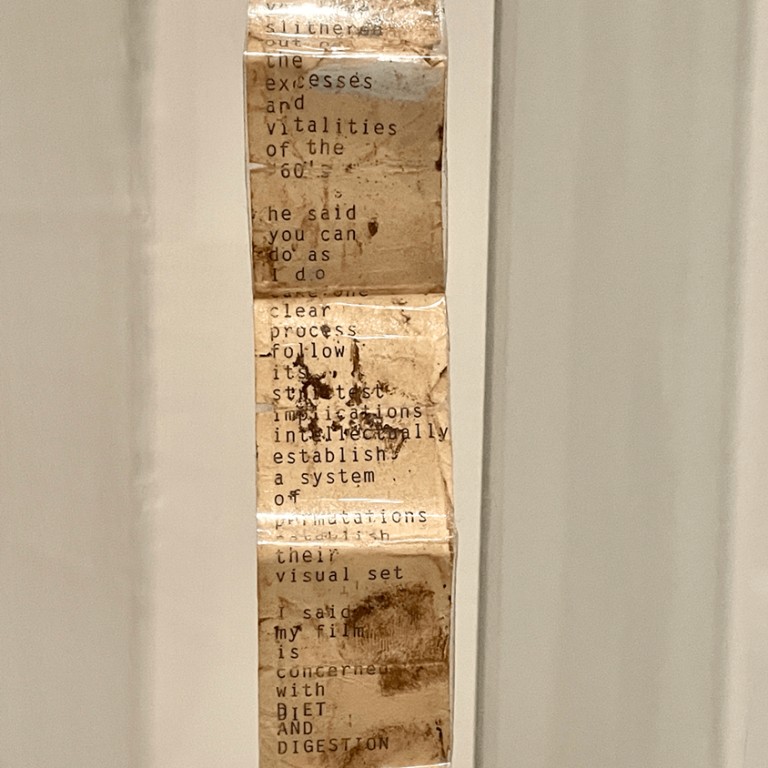
Interior Scroll (1975) detail
‘Interior scroll’ a performative piece in which Schneemann extracted a scroll from her vagina and read it to the assembled audience. This was part of her research into the ‘Vulvic Space’ – the vulva as a source of power , knowledge and taboos concerning women’s bodies. Its purpose; to shine a light on the ongoing reluctance of the art world to engage with women artists and art that spoke to and of women.
The scroll itself was conceived as a dialogue/criticism between Schneemann and film critic Annette Michelson, who stated that she couldn’t watch Schneemann’s films. In other words how is the female experience to be heard if even women refuse to engage with it?
Even by today’s standards, ‘Interior Scroll’ is frank, dirty, confrontational, sweaty and too much of what it is to be a woman. Incendiary work.
‘Up to and Including Her Limits’ (1975)
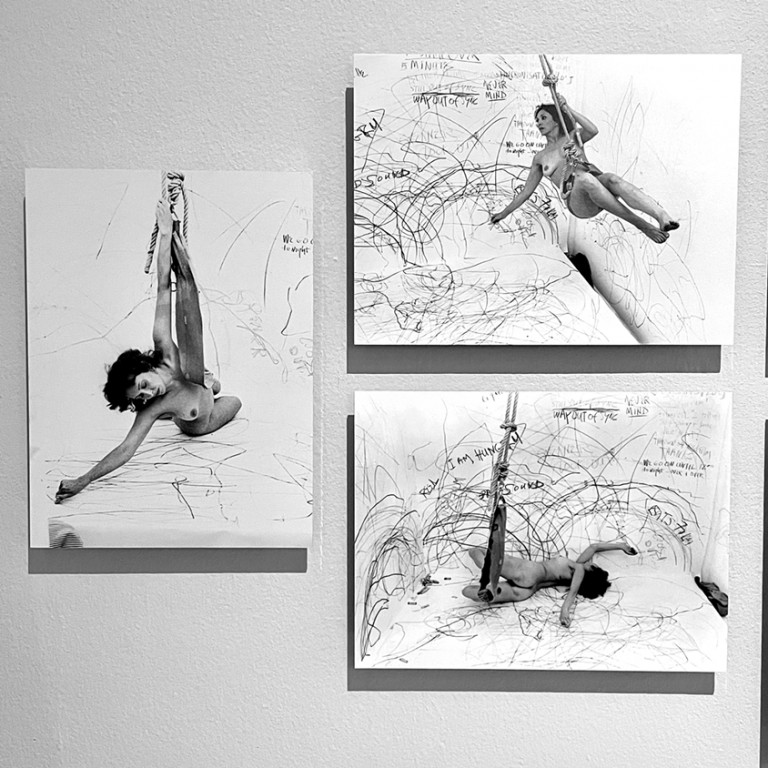
Up to and Including Her Limits (1976)
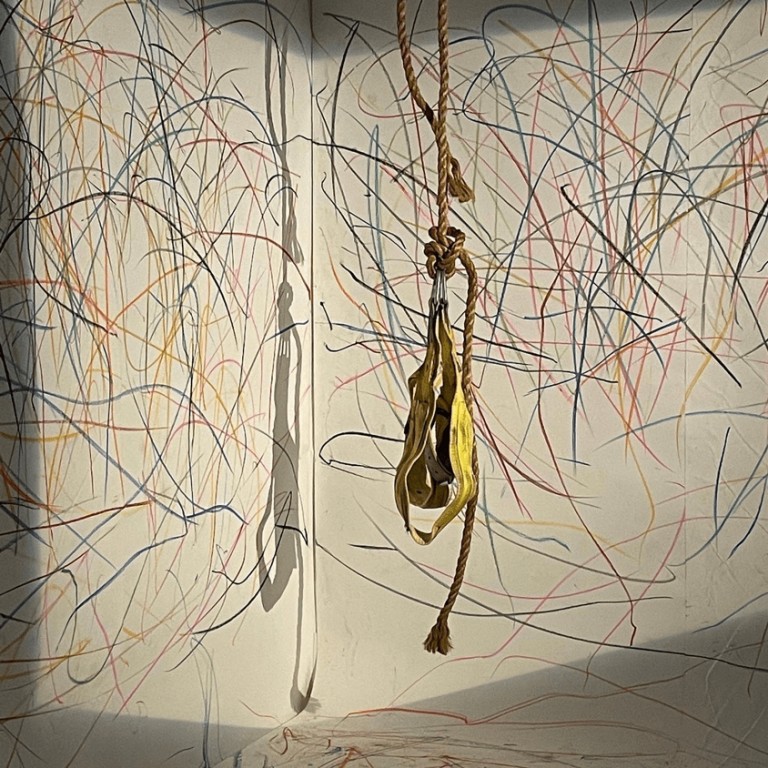
Up to and Including Her Limits (1976) detail
Another performative piece. Suspended in a sling, Schneeman engages in mark making. Why? Her body an integral part of the artwork. Without the former you could not have the latter. Rejecting the taboos surrounding female nudity she stated ‘I do not “show” my naked body! I AM BEING MY BODY’
There is an undeniable sense of euphoria and freedom associated with this piece.
‘Mortal Coils’ (1994-95)
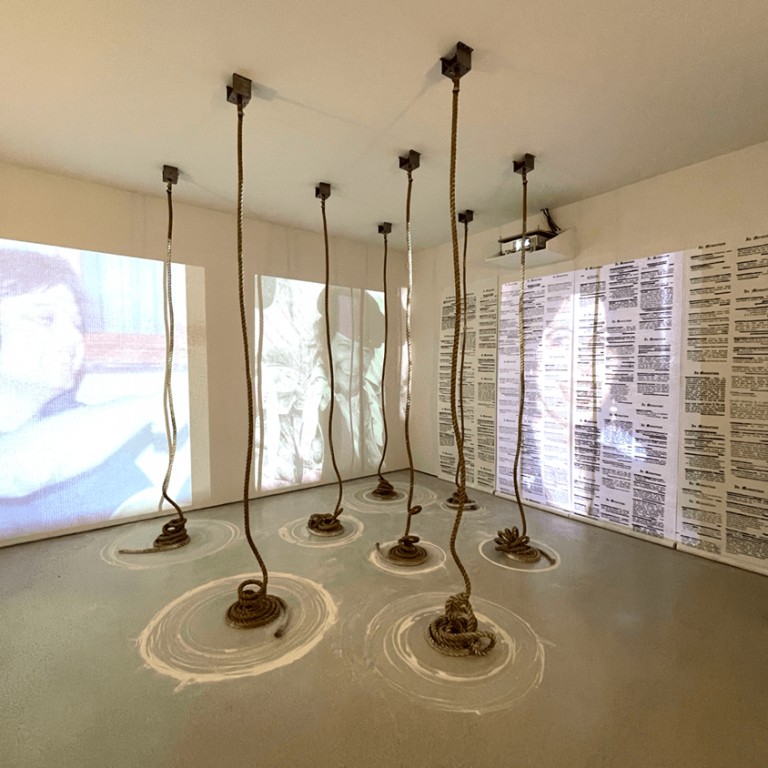
Mortal Coils (1994-95)
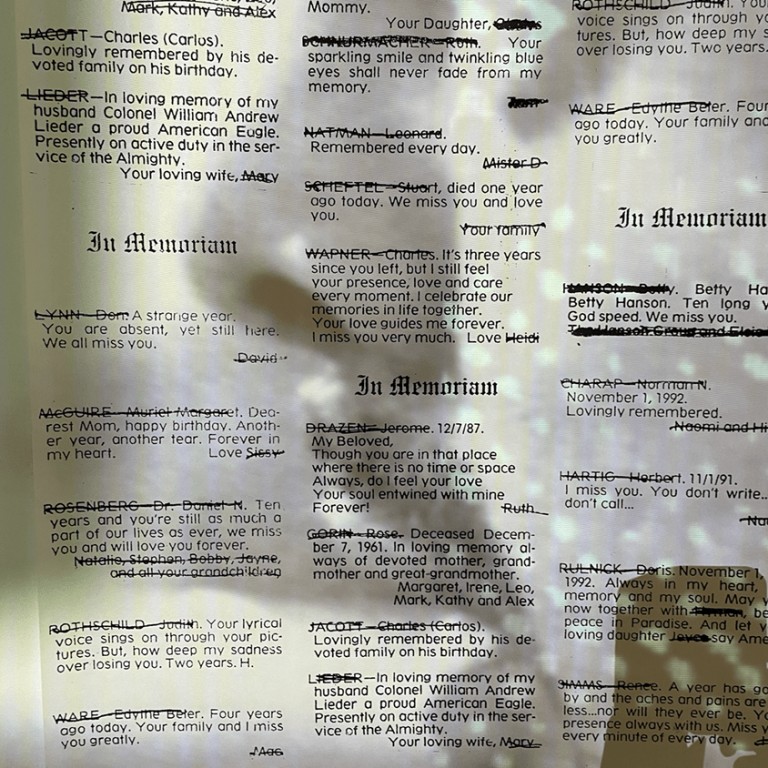
Mortal Coils (1994-95) detail
The weight of personal and societal loss, is writ large in this work. In response to the AIDS crisis and the loss of many friends and artists, Schneemann produced ‘Mortal Coils’. Acutely aware of the negative portrayal of the AIDS epidemic in the media, she sought to show empathy with the loss experienced by so many. The projection of faces on extracts from obituary columns movingly gives the countless names a human form.
This exhibition has it flaws. Schneemann’s early paintings, combines and box constructions are only of interest because they are hers. Disassociate them from Schneemann and they don’t stand up to scrutiny. However, her activism, be it as a woman or as part of the anti-war movements produced work of the NOW. She was however not without her own critics, even in the feminist movement itself. White, privileged and attractive, performing nude was often derided as self-indulgent and being more about herself than the wider struggles of being a woman. But something as openly confrontational as ‘Interior Scroll’ was never going to gain wide acceptance.
Looking at her feminist works through the prism of 2022, one can’t help but smile at the optimism inherent in them. There was the belief that they would bring about change. Perhaps naïve, perhaps a bit silly in places, but it doesn’t matter. It was voice that challenged misogyny and imperialism in equal measure and a voice that treated people as one.
Where are the comparable and challenging voices amongst today’s ‘younger’ women artists? The Guerrilla Girls? Yes. Sarah Lucas? Perhaps. Tracey Emin? Certainly not. It’s not as if the need for feminist voices has gone away. Maybe women just aren’t interested in those issues anymore.